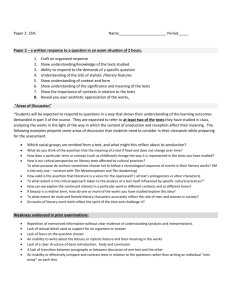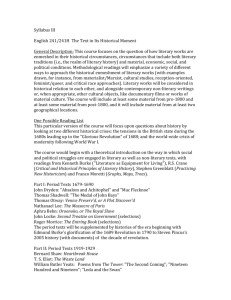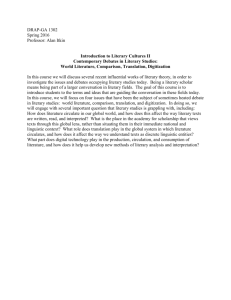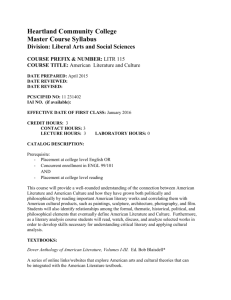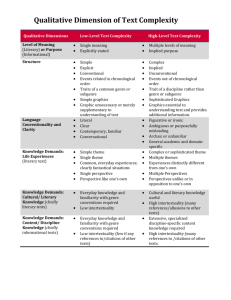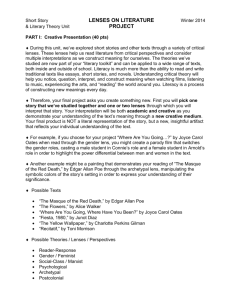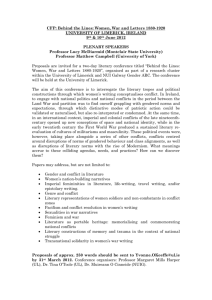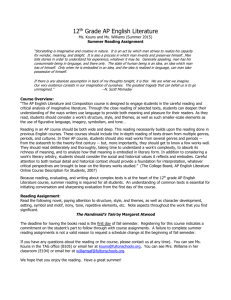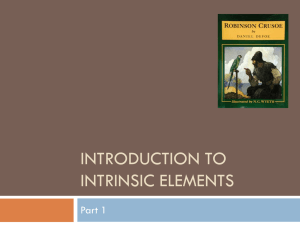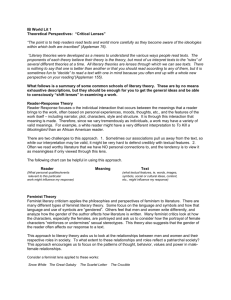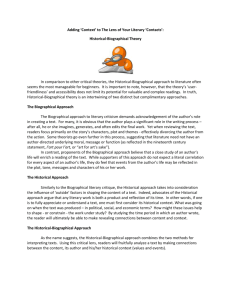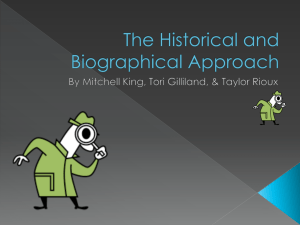The LENSES of Paper 2 Questions
advertisement
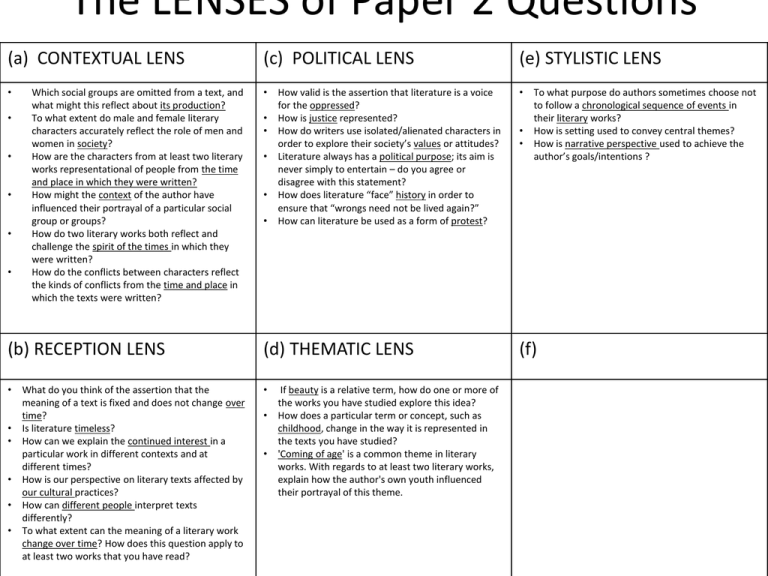
The LENSES of Paper 2 Questions (a) CONTEXTUAL LENS (c) POLITICAL LENS (e) STYLISTIC LENS • • • • • • • • Which social groups are omitted from a text, and what might this reflect about its production? To what extent do male and female literary characters accurately reflect the role of men and women in society? How are the characters from at least two literary works representational of people from the time and place in which they were written? How might the context of the author have influenced their portrayal of a particular social group or groups? How do two literary works both reflect and challenge the spirit of the times in which they were written? How do the conflicts between characters reflect the kinds of conflicts from the time and place in which the texts were written? • • • • • How valid is the assertion that literature is a voice for the oppressed? How is justice represented? How do writers use isolated/alienated characters in order to explore their society’s values or attitudes? Literature always has a political purpose; its aim is never simply to entertain – do you agree or disagree with this statement? How does literature “face” history in order to ensure that “wrongs need not be lived again?” How can literature be used as a form of protest? (b) RECEPTION LENS (d) THEMATIC LENS • • • • • • • What do you think of the assertion that the meaning of a text is fixed and does not change over time? Is literature timeless? How can we explain the continued interest in a particular work in different contexts and at different times? How is our perspective on literary texts affected by our cultural practices? How can different people interpret texts differently? To what extent can the meaning of a literary work change over time? How does this question apply to at least two works that you have read? • • If beauty is a relative term, how do one or more of the works you have studied explore this idea? How does a particular term or concept, such as childhood, change in the way it is represented in the texts you have studied? 'Coming of age' is a common theme in literary works. With regards to at least two literary works, explain how the author's own youth influenced their portrayal of this theme. • • To what purpose do authors sometimes choose not to follow a chronological sequence of events in their literary works? How is setting used to convey central themes? How is narrative perspective used to achieve the author’s goals/intentions ? (f)



